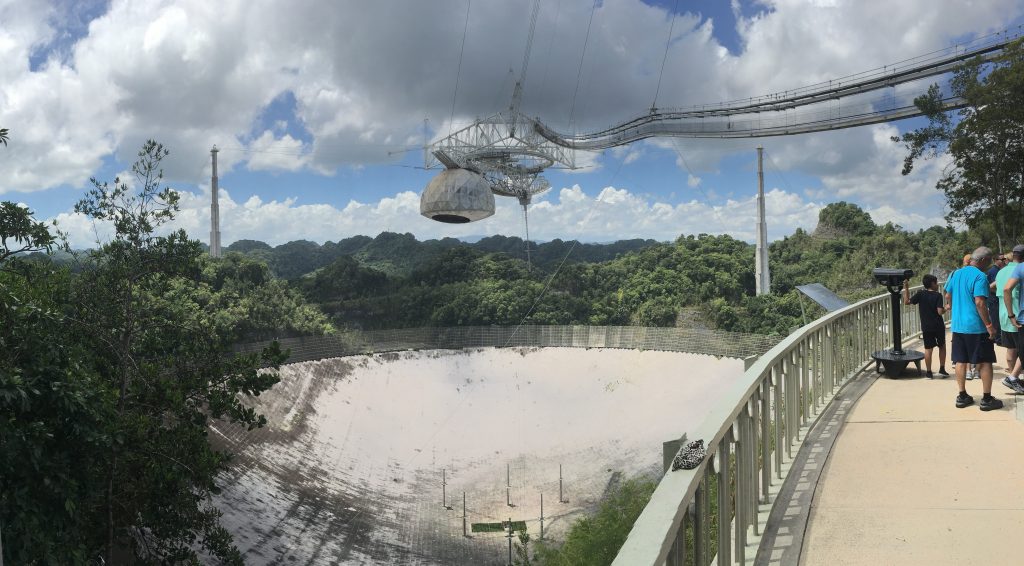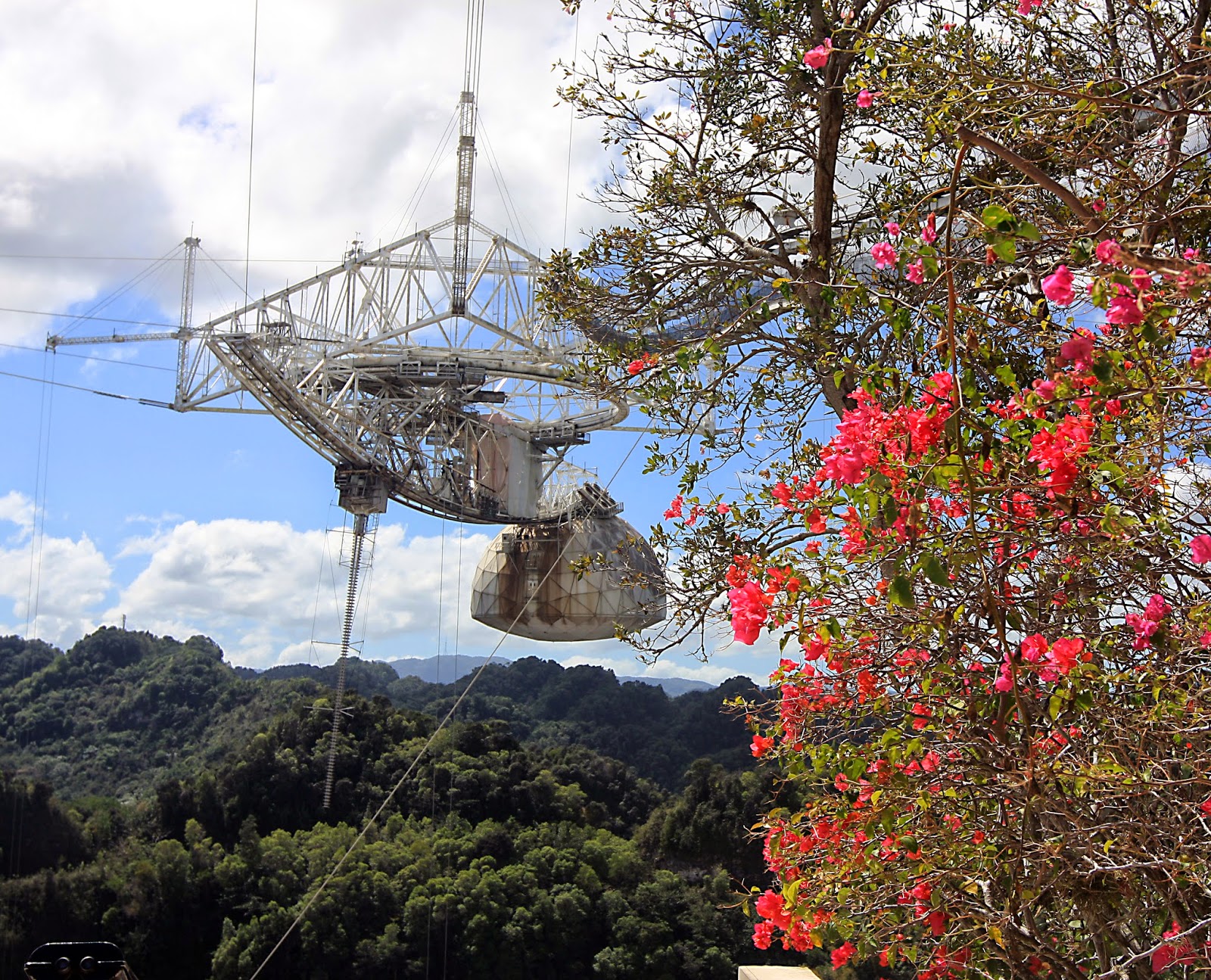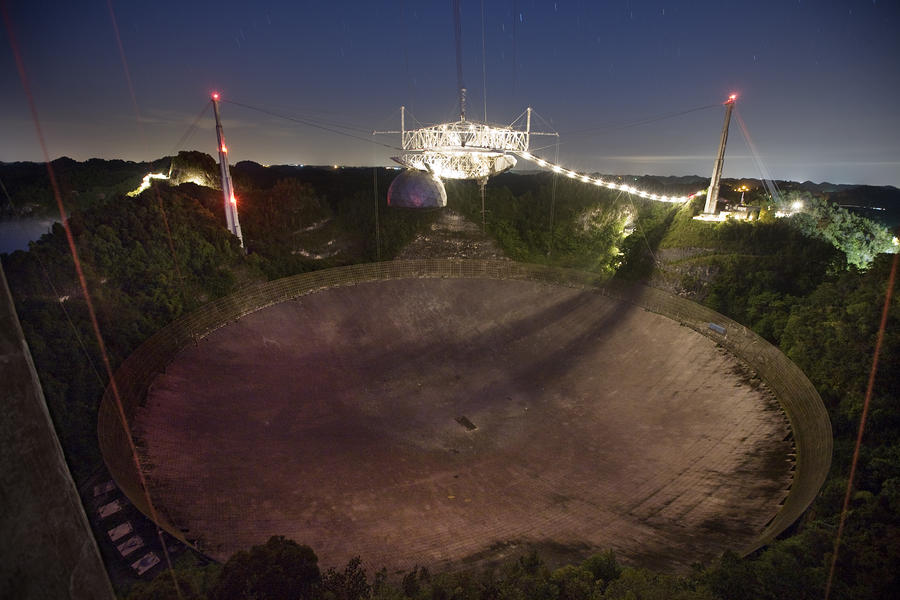

Scientists had used the telescope to study pulsars to detect gravitational waves as well as search for neutral hydrogen, which can reveal how certain cosmic structures are formed. The National Science Foundation, which owns the observatory that is managed by the University of Central Florida, said crews who evaluated the structure after the first incident determined that the remaining cables could handle the additional weight. 6, just days before a socket holding the auxiliary cable that snapped failed in what experts believe could be a manufacturing error. "The world without the observatory loses, but Puerto Rico loses even more." "I am one of those students who visited it when young and got inspired," said Abel Méndez, a physics and astrobiology professor at the University of Puerto Rico at Arecibo who has used the telescope for research. It also served as a training ground for graduate students and drew about 90,000 visitors a year. The telescope has been used to track asteroids on a path to Earth, conduct research that led to a Nobel Prize and determine if a planet is potentially habitable. It had endured hurricanes, tropical humidity and a recent string of earthquakes in its 57 years of operation. The telescope was built in the 1960s with money from the Defense Department amid a push to develop anti-ballistic missile defenses. "When engineers advised NSF that the structure was unstable and presented a danger to work teams and Arecibo staff, we took their warnings seriously." "We are saddened by this situation but thankful that no one was hurt," NSF Director Sethuraman Panchanathan said in a statement. The LIDAR facilities are still operational, along with a 12-meter telescope and a photometer used to study photons in the atmosphere, Vázquez said. The NSF said at the time that it intended to eventually reopen the visitor center and restore operations at the observatory's remaining assets, including its two LIDAR facilities used for upper atmospheric and ionospheric research, including analyzing cloud cover and precipitation data. officials and others to reverse the NSF's decision to close the observatory. Scientists worldwide had been petitioning U.S. "It's a huge loss," said Carmen Pantoja, an astronomer and professor at the University of Puerto Rico who used the telescope for her doctorate. However, observatory director Francisco Córdova, said that while the NSF decided it was too risky to repair the damaged cables before Tuesday's collapse, he believes there had been options, such as relieving tension in certain cables or using helicopters to help redistribute weight. "(The National Science Foundation) did the best that they could with what they have."

"The maintenance was kept up as best as we could," he said. He said that it was extremely difficult to say whether anything could have been done to prevent the damage that occurred after the first cable snapped in August. It was too much for the old girl to take."

on Tuesday wasn't a surprise because many of the wires in the thick cables holding the structure snapped over the weekend, Ángel Vázquez, the telescope's director of operations, told The Associated Press.

It's a very deep, terrible feeling."įriedman ran up a small hill near his home and confirmed his suspicions: A cloud of dust hung in the air where the structure once stood, demolishing hopes held by some scientists that the telescope could somehow be repaired. I knew exactly what it was," said Jonathan Friedman, who worked for 26 years as a senior research associate at the observatory and still lives near it. The collapse stunned many scientists who had relied on what was until recently the largest radio telescope in the world. Then a main cable broke in early November. An auxiliary cable snapped in August, causing a 100-foot gash on the 1,000-foot-wide (305-meter-wide) dish and damaged the receiver platform that hung above it. National Science Foundation had earlier announced that it would close the radio telescope. The telescope's 900-ton receiver platform and the Gregorian dome-a structure as tall as a four-story building that houses secondary reflectors-fell onto the northern portion of the vast reflector dish more than 400 feet below.


 0 kommentar(er)
0 kommentar(er)
